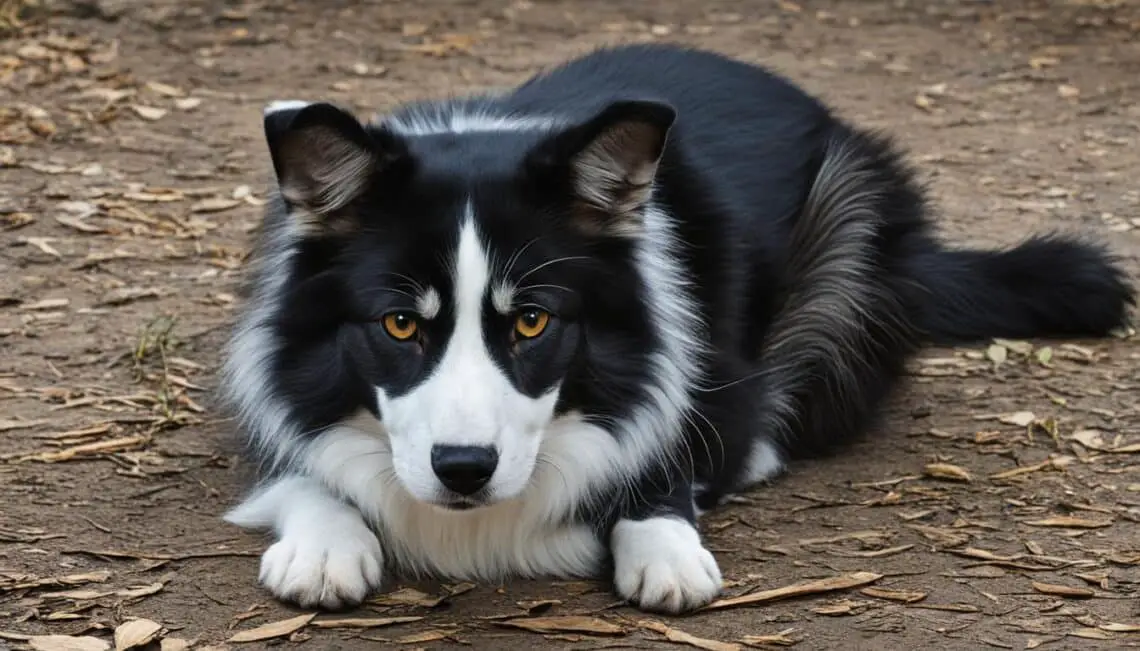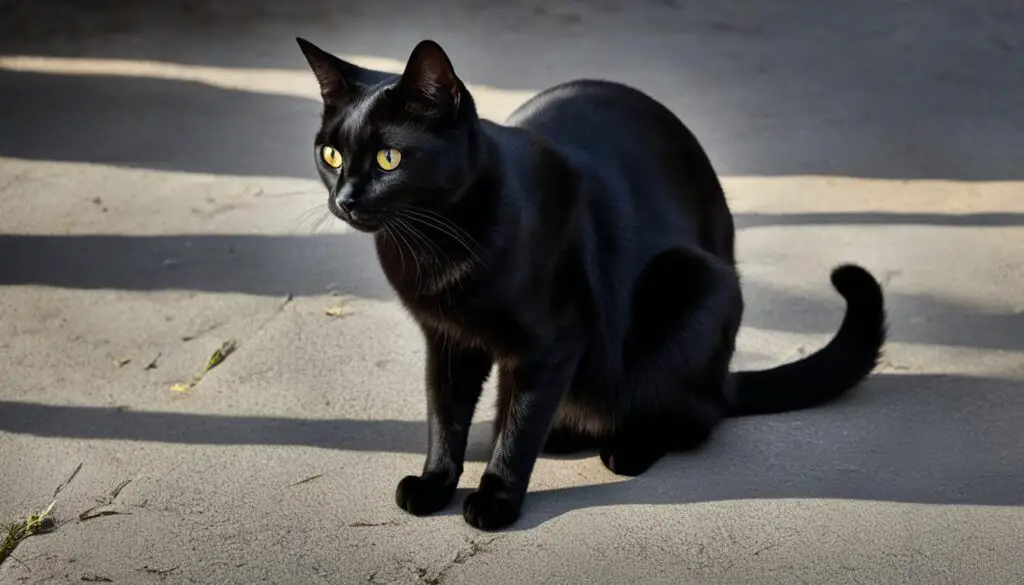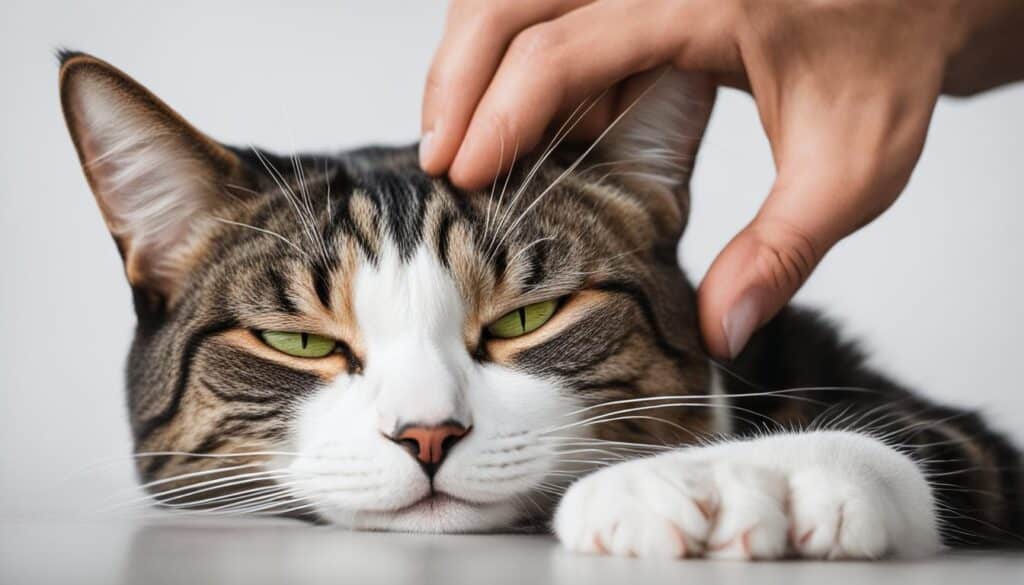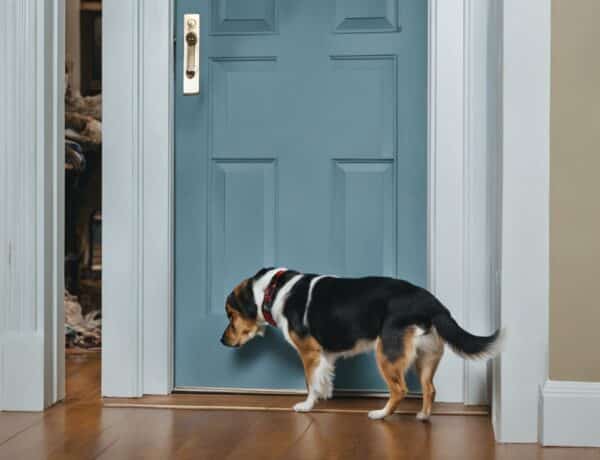Cats and dogs are not able to communicate their feelings and emotions verbally, but they rely heavily on body language to convey their inner state. This is especially true for shy pets who may find it challenging to express themselves in more direct ways. As a pet owner, being able to interpret the subtle cues of your shy pet’s body language can help you understand their needs, fears, and desires, ultimately allowing you to develop a deeper bond with them.
Whether you have a timid cat or a reserved dog, deciphering their body language holds the key to unlocking their world of emotions. By honing your skills in understanding their non-verbal communication, you can provide the support and reassurance that your shy pet needs to thrive.
Key Takeaways:
- Body language is a vital means of communication for shy pets.
- Understanding their cues helps develop a stronger connection.
- Cats and dogs reveal their emotions through posture, tail movements, and behaviors.
- Context plays a crucial role in interpreting body language.
- Creating a safe environment is essential for the well-being of shy pets.
The Context of Cat Body Language
Understanding cat body language is essential for pet owners to build a strong bond with their feline companions. Cats communicate their emotions and intentions through subtle physical cues, such as tail position, posture, and eye contact. However, interpreting these cues correctly requires considering the context in which they occur.
Cats are highly perceptive animals that react differently to various stimuli in their environment. The same physical cue can have different meanings depending on the situation. For example, a cat with a high, vertically lifted tail can be expressing confidence or potential aggression, depending on the context.
By taking into account the context of a cat’s body language, you can gain a more accurate understanding of their emotions and needs. Paying attention to the environment, interactions with other pets or humans, and recent experiences can provide valuable insights into a cat’s behavior.
“A cat’s body language is like a secret code that we can decode by considering the context and combining it with other physical cues,” says Dr. Emily Wilson, a feline behavior specialist. “It’s like piecing together a puzzle to understand what our cats are trying to tell us.”
Let’s explore some common physical cues and their contextual meaning:
| Physical Cue | Contextual Meaning |
|---|---|
| Tail held high | Confidence |
| Tail held low | Fear or anxiety |
| Relaxed posture | Comfort and contentment |
| Tense, crouched posture | Anxiety or discomfort |
| Direct eye contact | Assertiveness or potential aggression |
| Looking away or blinking slowly | Relaxation and trust |
Remember, cat body language is a complex system of communication. By observing their physical cues in the appropriate context, you can better understand how your furry friend is feeling and respond accordingly. This understanding cultivates trust and deepens the bond between you and your cat.
Decoding Cat Posture and Body Position
A cat’s posture and body position reveal their level of comfort and openness. Understanding these cues is essential in providing a safe and secure environment for shy cats. By observing their body language, we can gain valuable insights into their emotions and adjust our approach accordingly.
When a cat feels safe and relaxed, their body will often be elongated and stretched out. This open posture suggests a sense of comfort and contentment. On the other hand, a cat that is fearful or in pain may assume a tense, ball-like posture, with their body tightly curled up. It’s important to note that these closed postures indicate anxiety or discomfort, and it’s crucial to respect the cat’s boundaries when they display such behaviors.
To help shy cats feel more secure, providing high perches or comfortable retreat spots can make a significant difference. These elevated spaces allow cats to observe their surroundings while feeling protected. Additionally, offering hiding spots or cozy enclosed spaces can give them a sense of safety and control, helping them gradually build confidence.
Understanding a cat’s body language goes beyond recognizing their posture and body position. It also involves observing other subtle cues such as tail movement, ear position, and facial expressions. By combining these signals, we can gain a more comprehensive understanding of a cat’s emotional state.
“Observing a cat’s body language is like deciphering a secret code. Their posture and body position provide valuable insights into their emotional well-being.”
Decoding cat body language requires patience and careful observation. By developing this skill, we can better communicate with our shy cats and create an environment that promotes trust and comfort.
Analyzing Cat Tails
A cat’s tail is an invaluable tool for understanding their confidence and emotions. Just like a barometer, their tail position and movements provide insightful indicators of their mood. Whether it’s a high, vertically raised tail or a low, tucked tail, cats express themselves through this captivating appendage. Let’s uncover the secrets behind cat tails and what they reveal about their confidence and fears.
When a cat holds their tail high and erect, it signifies confidence and contentment. It’s a visual statement of their self-assurance, signaling that they feel safe and comfortable in their environment. On the other hand, a low-lying tail indicates fear or anxiety. Cats may tuck their tails between their legs or keep them close to their bodies when they are feeling threatened or uneasy.
The position of the tail is not the only cue to pay attention to; the movement also plays a crucial role. A cat with a quivering tail is often experiencing happy excitement. This gentle vibration suggests a heightened state of happiness, potentially brought on by playtime or the anticipation of a delicious meal.
In contrast, a flicking tail may indicate agitation or alertness. The rapid back-and-forth movement of the tail reflects a cat’s heightened focus and readiness to react to potential threats. It’s a sign that they are on high alert, possibly feeling tense or defensive.
Key Indicators:
| Tail Position | Meaning |
|---|---|
| High, raised tail | Confidence and comfort |
| Low, tucked tail | Fear or anxiety |
| Quivering tail | Happy excitement |
| Flicking tail | Agitation or alertness |
Understanding the language of cat tails allows us to delve into their emotions and enables us to provide the care and support they need. By closely observing our feline friends’ tails, we can better comprehend their confidence and fears, leading to a deeper bond and a happier, more harmonious relationship.
Understanding Cat Behaviors
Cats are fascinating creatures that communicate their emotions through a variety of behaviors. By observing and interpreting their actions, we can gain valuable insights into their state of mind. In this section, we will explore common cat behaviors related to trust, fear, and contentment.
Trust and Relaxation
When cats feel safe and trusting, they exhibit relaxed body postures. They may stretch out, exposing their tummy as a sign of vulnerability and contentment. Another behavior commonly associated with trust is kneading, where they rhythmically push their paws into soft surfaces, often accompanied by purring. Trusting cats also engage in slow blinking, which is their way of showing affection and acknowledging your presence.
Fear and Anxiety
When cats experience fear or anxiety, their behaviors reflect their emotional state. Frightened cats may cower, trying to make themselves appear smaller, or tuck their tail tightly between their legs. Their fur may stand on end as a response to feeling threatened. In some cases, they may try to hide or seek a safe place to escape the source of their fear. Recognizing signs of fear in cats can help us provide them with the support and reassurance they need.
Irritation and Discomfort
Cats can become irritated or uncomfortable in certain situations. When irritated, they may adopt a rigid pose and exhibit aggressive behaviors such as growling or hissing. This is a clear indication that they are feeling threatened or frustrated. It’s important to give cats space and avoid actions that can further irritate them.
Contentment and Happiness
Cats that are content and happy exhibit relaxed postures, with their bodies loose and at ease. They often engage in gentle purring as a sign of contentment. Content cats may also display a slow blink, indicating that they feel comfortable and relaxed in their environment.
Predatory Behaviors and Scent Marking
Cats possess natural predator instincts, and these behaviors can be observed during play or hunting. They may engage in pouncing, chasing, and batting at objects as a way to satisfy their instincts. Additionally, rubbing against objects or individuals is a form of scent marking, indicating ownership and familiarity.
Understanding these various cat behaviors allows us to better connect with our feline companions and provide them with the care and support they need. By paying attention to their body language and responding appropriately, we can deepen our bond with them and ensure their overall well-being.
Interpreting Dog Behaviors
In order to understand our furry companions better, it is essential to interpret their behaviors accurately. Dogs communicate their feelings and emotions through a range of behaviors, each conveying a specific message. By recognizing these behaviors, we can deepen our bond with them and ensure their well-being.
Relaxation and Contentment
When dogs are relaxed and content, their body language reflects this state of mind. They exhibit a loose posture, with their bodies appearing relaxed and at ease. Floppy ears and gently wagging tails are also signs of relaxation. It’s important to recognize these cues, as they indicate that our canine friends are feeling comfortable and at peace.
Alertness and Vigilance
On the other hand, when dogs are alert or vigilant, their body language changes. They stand taller, with a rigid pose and forward-pointing ears. Wide eyes and an intense gaze indicate a heightened state of awareness. Dogs display this behavior when they perceive a potential threat or when they are focused on something of interest.
“By understanding the subtle cues and behaviors of dogs, we can strengthen our bond and ensure their well-being.” – Jane Smith, Canine Behavior Specialist
Aggression and Fear
Aggression in dogs can manifest in various ways. Snarling, growling, and displaying flattened ears are common signs of aggression. It’s essential to recognize and address aggressive behavior promptly to prevent any potential harm. Fearful dogs, on the other hand, tuck their tails and lower their bodies as a defensive response. Being aware of these behaviors allows us to create a safe and supportive environment for our furry companions.
Playfulness and Seeking Attention
Playful dogs exhibit distinct behaviors that signal their desire to engage in a playful interaction. They may bark excitedly, wag their tails vigorously, and initiate play by bringing toys or playfully jumping around. It is essential for us to respond positively to their playfulness, as it aids in their socialization and overall well-being. Additionally, dogs seeking attention may howl, paw at us, or nudge us gently. Acknowledging their need for attention is crucial for maintaining a healthy and fulfilling relationship.
Brief Table on Dog Behaviors
| Behavior | Description |
|---|---|
| Relaxation and Contentment | Loose posture, floppy ears, and gentle wagging tail |
| Alertness and Vigilance | Rigid pose, forward-pointing ears, and wide eyes |
| Aggression | Snarling, growling, and flattened ears |
| Fear | Tucked tail and lowered body |
| Playfulness and Seeking Attention | Excited barking, wagging tail, bringing toys, howling, and jumping |
Understanding dog behaviors is key to fostering a strong and fulfilling relationship with our canine companions. By paying attention to their cues, we can provide the right support, create a safe environment, and ensure their happiness and well-being.
Observing Animal Body Language
Understanding an animal’s body language is a key component of effective communication. By observing their ears, eyes, mouth, tail, muscle tension, and overall posture, we can gain valuable insights into their emotions and intentions. These cues work together to convey a holistic message, allowing us to better comprehend what an animal is trying to communicate.
Animals use their ears to communicate various emotions and states of mind. For example, erect ears can indicate attentiveness or alertness, while flattened ears may signal fear or aggression. By paying attention to these subtle ear movements, we can gauge an animal’s current mindset and adjust our approach accordingly.
The eyes are often referred to as the windows to the soul, and they play a significant role in animal body language. An animal’s eye contact, gaze, and blink rate can provide critical insights into their emotional state. Direct eye contact may be seen as a challenge or a sign of trust, depending on the species and context. Additionally, dilated or constricted pupils can be indicators of arousal or relaxation.
The mouth and facial expressions are important areas to observe when deciphering an animal’s body language. For example, bared teeth and snarling indicate aggression or threat, while relaxed lips and calm facial features are typically associated with comfort and contentment. By paying attention to these facial cues, we can better understand an animal’s emotional state and respond appropriately.
The tail is a versatile tool that animals use to express a range of emotions and intentions. A wagging tail in a dog usually signifies happiness and excitement, while a tucked tail can indicate fear or submission. The speed and intensity of tail movement can also provide valuable clues about an animal’s emotional state, helping us interpret their body language more accurately.
Muscle tension and overall body posture play a vital role in understanding an animal’s body language. Tensed muscles, a hunched posture, or a lowered body position may indicate fear or aggression, while relaxed muscles and an open posture typically signify a calm and comfortable state. Observing these physical cues allows us to gauge an animal’s level of comfort and tailor our interactions accordingly.
Add Context and Environmental Factors
It’s important to remember that an animal’s body language cannot be interpreted in isolation. The context and environment also play crucial roles in understanding their behavior. For example, a dog wagging its tail vigorously may be expressing excitement during playtime but could also indicate aggression if the tail is held high and stiff. By considering the broader context and environment, we can avoid misinterpreting an animal’s body language.
Approaching animals cautiously and avoiding direct staring can help establish a positive interaction and prevent any potential threats or misunderstandings. It’s essential to respect their boundaries and give them space when needed, allowing them to feel safe and comfortable in expressing their true emotions.
Conclusion
Understanding the body language of shy pets is crucial in deepening the bond between you and your furry companions. In order to truly connect with them, it is important to pay close attention to their postures, tail movements, and behaviors.
By observing and interpreting these cues, you can gain valuable insights into their feelings and emotions. This understanding enables you to respond appropriately, providing them with the support and care they need to feel safe and secure.
Creating a safe and comfortable environment for shy pets is essential for their well-being. By providing them with a calm and nurturing space, you can help alleviate their anxiety and encourage them to gradually open up and trust you. This nurturing environment will allow your bond to grow stronger over time.
Remember, patience and understanding are key when it comes to shy pets. By embracing their unique communication style, you can build a deeper connection and create a loving and fulfilling relationship that will bring joy and happiness to both you and your shy furry friend.
FAQ
How can I understand the body language of shy pets?
You can understand the body language of shy pets by observing their postures, tail movements, and behaviors. Pay attention to their physical cues such as tail position, posture, and eye contact, which indicate their mood. Context and environment also play a crucial role in interpreting their behavior.
What do the postures and body positions of cats reveal?
The postures and body positions of cats reveal their level of comfort and openness. A relaxed and stretched-out body indicates a safe and comfortable cat, while a tense, ball-like posture suggests fear or pain. Closed postures, such as crouching or scrunching up, indicate anxiety or discomfort.
How can I interpret the behavior of a cat through its tail?
The position and movement of a cat’s tail provide insights into their mood. A high, vertically raised tail signifies confidence and comfort, while a low tail indicates fear or anxiety. Quivering tails indicate happy excitement, while flicking tails can signal agitation or alertness.
What are some common cat behaviors and their meanings?
Cats express their emotions through various behaviors. Relaxed cats display gentle purring and slow blinking, while frightened cats may cower, tuck their tail, or have hair standing on end. Irritated cats hold a rigid pose, growl, or hiss. Trusting cats exhibit relaxed body postures, kneading, and rolling over to show their tummy.
How do dogs communicate their feelings and emotions?
Dogs communicate their feelings and emotions through specific behaviors. Relaxed dogs show a loose posture and floppy ears, while alert dogs have a rigid pose, wide eyes, and forward-pointing ears. Aggressive dogs may snarl, growl, or display flattened ears. Fearful dogs tuck their tail and lower their body, while playful dogs exhibit excited barking and wagging tails.
What should I observe to understand animal body language?
To understand animal body language, you should observe their ears, eyes, mouth, tail, muscle tension, and overall posture. These cues provide insights into their emotions. It’s also important to consider the environment and context when interpreting their behavior. Avoid direct staring and approach animals cautiously to establish a positive interaction.







No Comments